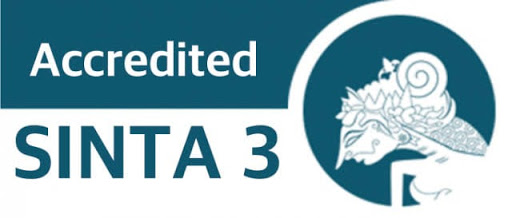UTILIZING GADGET BASED INTERNET APPROACH DURING THE PANDEMIC TO IMPROVE STUDENTS’ BAHASA INDONESIA LEARNING OUTCOMES AT GRADE IV OF SD NEGERI 10 BAGAN PUNAK KECAMATAN BANGKO
Abstract
Keywords
Full Text:
PDF (BAHASA INDONESIA)References
Anas Sudijono, (2004).Pengantar Statistik Pendidikan. Jakarta: Raja Grafindo
Aqib, Zainal. (2009). PenelitianTindakan Kelas. Bandung: Yrama Widya.
Arikunto, Suharsimi. (2014). Penelitian Tindakan Kelas. Jakarta: Rineka Cipta.
Farida. (2017). Penggunaan Gadget Terhadap Hasil Belajar Mata Pelajaran IPS Siswa Kelas VII SMP Negeri 1 Kembangbahu Lamongan. Skripsi tidak diterbitkan Malang : PPs Universitas Islam Negeri Maulana Malik Ibrahim.
Ghifary dan Kurnia. (2015). Intensitas Penggunaan Smartphone Terhadap Perilaku Komunikasi. Jurnal Sosioteknologi, (Online). Volume 14, No 3.
Iswidharmajaya & Derry. (2014). Bila Si Kecil Bermain Gadget: Panduan Bagi Orang Tua Agar Memahami Faktor-Faktor Penyebab Anak Kecanduan Gadget. Jakarta: EGC.
Manumpil, dkk. 2015. Hubungan Penggunaan Gadget dengan Tingkat Prestasi Siswa di SMA Negeri 9 Manado. Jurnal Keperawatan, (Online). Volume 3, No 2.
Sudjana, Nana. (2004). Penilaian Hasil Belajar Mengajar. Bandung: Remaja Rosdakarya
Rosiyanti, Hastri., dan Esti Wijayanti. 2015. “Implementasi Model Pembelajaran Treffinger Terhadap Hasil Belajar Matematika dan Sikap Siswa”. Jurnal Fibonacci: Pendidikan Matematika dan Matematika. Vol 1 (2), 37-44
Slameto. (2010). Belajar dan Faktor-Faktor yang Mempengaruhinya. Jakarta : Rineka Cipta
Wardani & Wihardit. (2008). Penelitian Tindakan Kelas. Jakarta: Universitas Terbuka.
DOI: http://dx.doi.org/10.33578/pjr.v5i5.8551
Refbacks
- There are currently no refbacks.
Copyright (c) 2021 JURNAL PAJAR (Pendidikan dan Pengajaran)

This work is licensed under a Creative Commons Attribution-NonCommercial-ShareAlike 4.0 International License.
JURNAL PAJAR (Pendidikan dan Pengajaran)
Secretariat
Program Studi Pendidikan Guru Sekolah Dasar
Gedung B1, FKIP Universitas Riau
Kampus Bina Widya Km. 12,5 Simpang Baru Panam
Pekanbaru Riau Indonesia 28293
e-mail : pajar@ejournal.unri.ac.id



